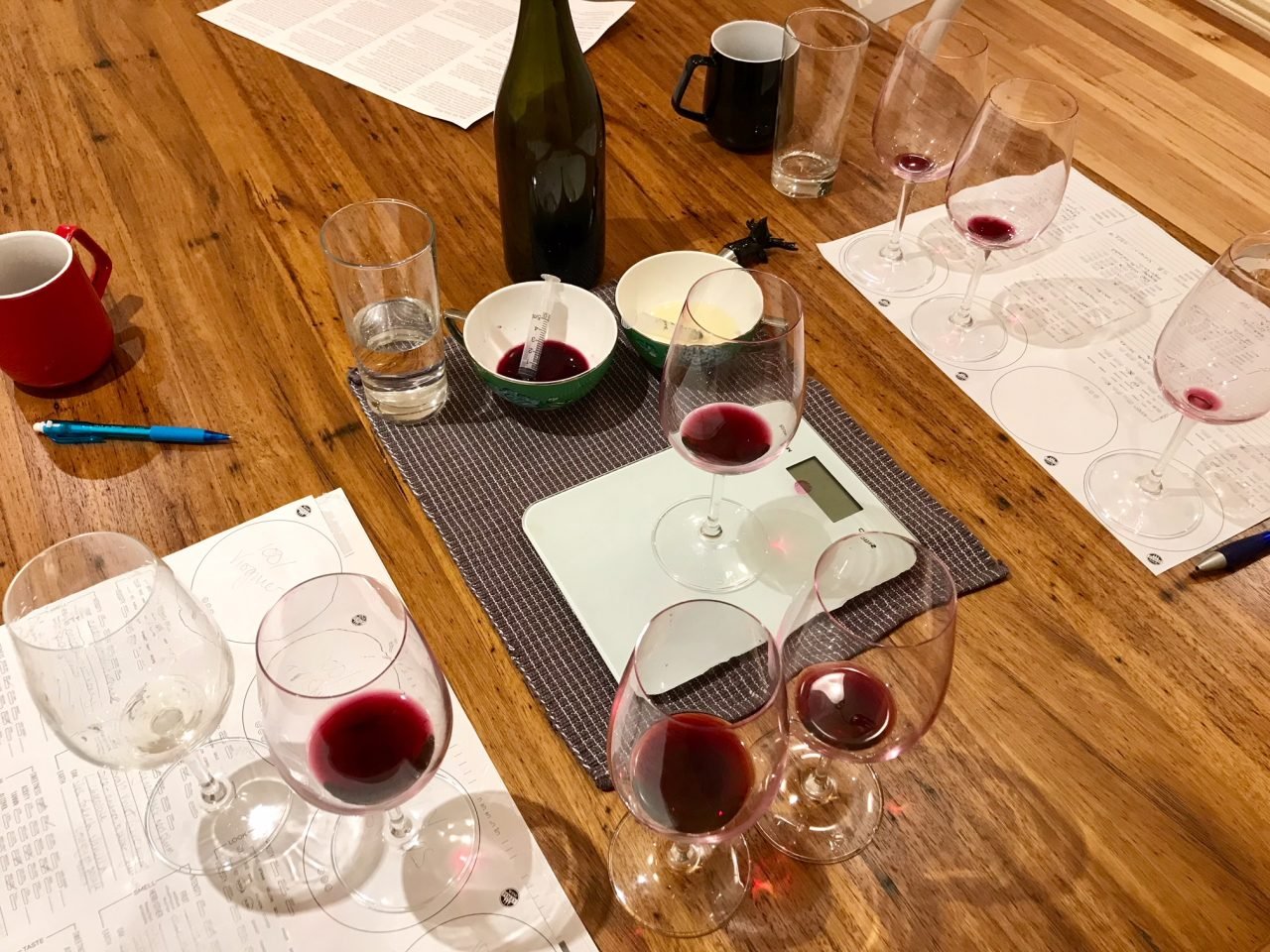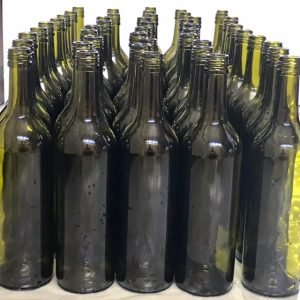 It has been a big week for us at Class to Glass, as we proudly blended and bottled our 2017 Teachers’ Pet Shiraz. Our first vintage!
It has been a big week for us at Class to Glass, as we proudly blended and bottled our 2017 Teachers’ Pet Shiraz. Our first vintage!
On Reflection….
Winemaking is more of a vocation than a hobby to us. What started as a collection of impulse purchases at our local wine supplier, Grain and Grape, is now a treasured part of our lives. Of course, with my course starting, it made sense for us to try and make some wine at home. However, neither of us were expecting to bottle our 2017 vintage (which started in an apartment bathroom) in our winery (garage). Surrounded by numerous demijohns, fermenting vessels, a custom made cool-chamber and even a new crusher de-stemmer, the extent of our obsession was clear.
Many mistakes have been made over the course of our first home vintage. Not surprising, considering that we started out with just a simplistic instruction sheet. As my course proceeded, I learnt so much, so quickly, and the introduction of new ideas happened as fast as our collection of equipment. Some things were done very well, for example, our attention to sanitation and the prevention of oxidation with both neon and carbon dioxide. Other things were less controllable, like our runaway bathroom fermentation, on a few hot days in March.
Teachers’ Pet Shiraz 2017 – Tasting Note
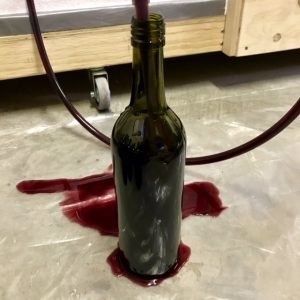
Ruby red with a purple tinge
Medium ruby in colour, with a youthful tinge of purple and medium to low viscosity. Teachers’ Pet Shiraz has a medium minus intensity bouquet of cherries and red plums. It has a hint of herbaceousness, spice and chocolate. Oak staves were added to the demijohns and this is evident as vanilla and some tobacco and toasty flavours on the palate.

pre-blend tasting
Dry, with a medium plus acidity (pH 3.69). Medium plus body with medium silky tannins and moderate alcohol. The length is short to medium with little in the mid to back palate.
Blending
Actual wine! We made actual wine. However, it was clear all the way through that it was missing something. That something is complexity and length. After the initial flavour hit, there is not much going on. It was clear that it needed a little help. Viognier is used around the world, especially in the Northern Rhone, to add body and length to Shiraz. You may not have known that, as unless there is more than 15% of another varietal in your bottle, it can be labelled as pure Shiraz. Viognier came to our rescue too – Yalumba Y-Series 2015 Viognier in fact.
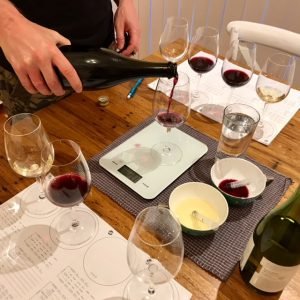
Scales used to measure large volumes, syringes for smaller volumes
Correct ratios are essential, so we conducted our own blending trial. First tasting 100% Viognier and 100% Teachers’ Pet Shiraz, we sat in silence over our tasting mats in full concentration. After ascertaining the properties of our base wines, we mixed up blends of 5% and 10% Viognier. To do this on such a small scale we used a balance that measured mL and syringes. In silence again, we tried to pick up the subtle differences.
Results:
5% Fruit seemed clipped, red cherry moved to palate and lots more oak evident. Tannins seemed more chalky. Green characters enhanced. This addition really filled out the mid palate resulting in a longer finish. Persistent acid and alcohol. In conclusion, the nose was clipped but the palate much more filled out.
10% Intensity of aroma clipped further, but fruits lifted on nose and palate. More spice and more toast and chocolate. Tannin seemed reduced again. In conclusion, aromas lower in intensity but fruit flavours lifted on nose and palate. Length increased, more mid and back palate.

Phil concentrating hard
So the Viognier clearly makes a big difference, and we were delighted that it was filling out the palate as desired. A little concerned about the diminishing aromas with increased Viognier, we tried 2.5% and 7.5% additions.
Results:
2.5% Fruit flavours lifted on nose and palate. Tannins more evident and chalky, but well balanced. Length increased and mid palate filled out. A great balance between aroma, flavour and length.
7.5% Similar effects to 10%, clipped nose, slight lifted flavours. Medium length.
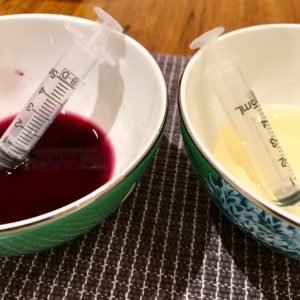
Fine tuning the volumes
Winner: 2.5% We were both amazed that just 2.5% Viognier was enough to lift the aromas, flesh out the mid palate and boost the length enough to make us proud of the resulting very pleasant wine. (Tasting mats from www.winefolly.com)
Lessons Learnt
Short length and a lack of complexity can be caused by a number of reasons. However, we believe that in our case it was due to our runaway fermentation at the start. This year, with the aid of our trusty cool-chamber, we are hoping to try and restrict the temperature of the ferment a little. Hopefully, this will have the effect of slowing the yeast right down. After fermentation, we are determined not to panic and grab the press, but rather to use our carbon dioxide canister and maintain skin-contact for a few weeks. The prolonged ferment and skin contact should aid in the transfer of anthocyanins, tannins and other complex molecules to the must.
Other tricks up our rapidly learning sleeves include: the addition of different selected cultured yeast to different batches of the ferment, a co-inoculation with cultured MLF bacteria during ferment and more informed sulphur additions.
Bottling
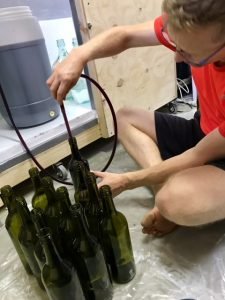
Siphoning the booze to bottles
With 2.5% Viognier and a small volume of sulphur, the time had finally come to bottle our first progeny. Bottles were washed and sterilised in a little potassium metabisulphite. The ‘Beast of Yeast’, our new cool-chamber provided a welcome elevation, as the wine was siphoned into bottles. The head space in each bottle was sparged with carbon dioxide to prevent in-bottle oxidation, then the caps went on. For our first batch of wine, we opted for plastic screw-caps, the cheapest option.

Multi-tasking, beer and sparging
Bottle closure options are numerous and their effectiveness is still under great debate. Most wines in Australia are now bottled under metal screw cap, which arguably, is the best option for preservation. Screw caps do not result in faults associated with cork like TCA (although corks are not the only of this chemical), however, they also do not allow the oxygen ingress needed to slowly age some quality red wines.
We are hoping that the bottle transfer and high-ish pH will result in just enough oxygen in the bottle to help our wine to mature a little without damaging it. The purple hue of the wine is indicative of its young age. Purple can also indicate a high pH, but 3.69 is not atypical for a Heathcote Shiraz. I think our wine has well balanced acid and enough fruit to last for a couple of years in-bottle and we are looking forward to seeing how it changes over the next few month/years (if it lasts that long).
Next Year…

Our first case
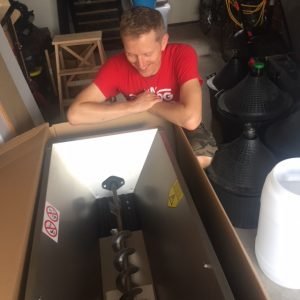
Proud of his new crusher de-stemmer
With our massive new crusher de-stemmer, Phil has big plans for Vintage 2018. He is hoping to make more Heathcote Shiraz, but also a Chardonnay and Pinot Noir – maybe even some pink. We have invested in an equipment upgrade with an aim of making enough high quality wine to start selling it. So watch this space… you could be sipping the fruits of our labour some time in the near future. We will make it worthy we promise!

